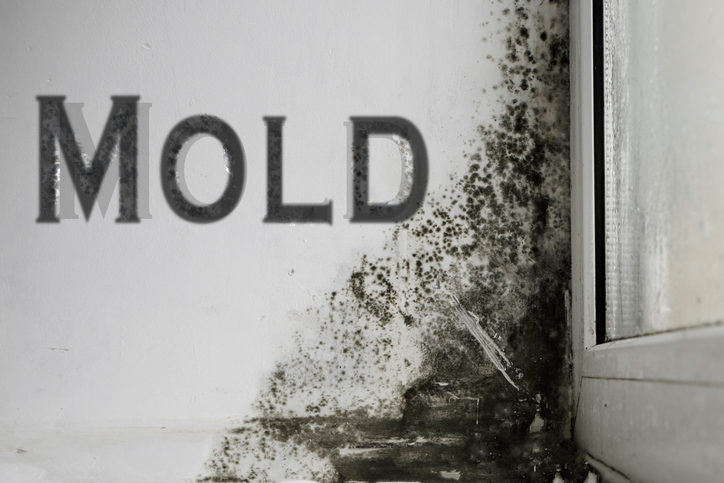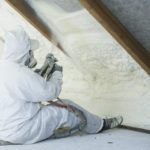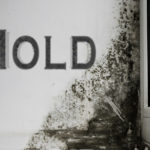I found Mold in My Attic! What do I do?
Is mold in your attic becoming a health concern for your family? We all agree that many people across the world struggle to prevent mold growth in their attics. In order to promote a healthier environment, here is Mold in Attic: How to Kill Dangerous Mold In Your Attic Fast to help you learn more about mold control.

What Causes Mold in Your Attic?
Do you know that mold could be growing in your attic without your knowledge? This happens mainly because homeowners hardly access the attic for roof leaks and moisture problems. If you don’t check your attic regularly, you not only risk decreasing the aesthetic value of your home, but you also cut down the entire value of your home. What’s more, you can lose numerous amounts of money on repairs. Check out some of the causes of mold growth in the attic below.
Lack of Enough Insulation Along Attachments
Are the attachments along with your ceiling adequately sealed and insulated along the edges? If they aren’t, warm air emanating from your home can penetrate through the attic. Are you incurring colossal energy costs? If the answer is yes, then you need to check out the state of insulation of your attachments.
The worst thing that can result from a poorly sealed and insulated attic is moisture problems. When the warm air rises and encounters the attic wall’s cold surface, it’ll condense. After some time, you may start noticing mildew and mold growing along the attic’s walls and floor.
Dryer Vents which Emit into the Attic
Do you take time to check the insulation state of your dryer vent? Perhaps it’s emitting into the attic as a result of poor insulation. If this is the case, then your dryer could be emitting all the moisture and hot air in the attic and if not controlled, this not only causes moisture problems, but it also creates a fire hazard due to the buildup of lint.
Varying Attic Vent Types
Always choose the right ventilation for your attic. This will guarantee efficient removal of air outside the attic area. Make sure that your attic has the same type of attic vents. Remember, using varying types could encourage air confinement in the attic, seeing that inefficient vents direct air in the attic which eventually cuts down the whole venting system.
Bathroom and Kitchen Vents Discharging in the Attic
Just like in the dryer vent, ensure that your bathroom and kitchen vents don’t discharge in the attic. Ensure that all vent outputs in your home are directed outside your home through the ground or even roof. It’s worth reiterating that bathrooms and kitchens produce massive humid and warm air which is discharged by using exhaust fans and vents. If such warm air is discharged in the attic, it creates a wet film across the walls and floors of your attic hence encouraging mold growth.
Roof Leaks
If you have a leaking roof, the best thing to do immediately is to have it repaired to avoid mold in the attic. It doesn’t matter whether your roof is new or even old, any type of roof leak will continue to increase especially when you disturb the roof in search for the possible problem area. This is why you should consider hiring a professional to mend the roof for you.
Lack of Attic Floor Insulation
Your attic floor should be appropriately insulated to avert moisture and drafts that move from your living area to the attic.
What are the Types of Attic Mold?
There’s a wide range of mold in the environment. Many times, you’ll hardly notice a mold problem until it escalates and causes a serious health problem. There are various types of attic mold which include: white mold, pink mold, blue-green mold, yellow mold, and black mold. The most common types of mold from the aforementioned list are the white and black molds.
Black Mold
Black Mold in attic occurs due to excess moisture with no appropriate ventilation. Black mold is commonly referred to as toxic black mold. Prolonged exposure to black mold can cause trigger allergies as well as cause health complications such as wheezing, nasal congestion, eye irritation, upper respiratory tract complications, skin irritation, and coughing.
If you discover black mold in your home, it’s not an indication that you should vacate your home. However, you’ll need to seek professional advice from qualified mold in attic cleaners. What’s more, if you experience any severe symptoms, you should consult a doctor immediately.
White Mold
You may have problems telling white mold apart from efflorescence, a common, cosmetic accumulation of salt deposits emanating from roof leaks. In order to tell the difference, analyze the material. Is it on masonry, concrete, or efflorescence? If the substance is on drywall or wood, then that’s white mold.
Prolonged exposure to white mold can cause health complications such as skin and eye irritation, and coughing. If you encounter white mold in your attic, your professional mold cleaning service provider should be able to solve the problem once and for all.
Is Mold in My Attic Dangerous?
Yes, and there are numerous health complications related to prolonged exposure to mold. Estimates suggest that approximately 10% of people are allergic to mold. The worrying fact is that just like many other allergies, you may never know that you are allergic to mold. Still, you can react to mold even when you aren’t allergic to the same. Some you may want to check out what’s triggering the symptoms and if there’s no mold in your attic, go for medical checkup.
Mold Spreads
What you don’t want to do is to spread the mold in other areas across your home. This is why you should have a professional handle the mold removing process because they are qualified to manage it appropriately. Remember, mold spores can penetrate through small openings. Failure to clean mold in the attic means that you could get exposed to mold throughout your home.
How to Recognize Mold in Your Home
You can easily tell that you’ve been exposed to mold if you or other people in your home start experiencing some of the above-mentioned symptoms. Sometimes, these symptoms may subside when you’re out of the house. If any of these has happened to you then you most likely have mold infestation in your house and the best thing to do is get a professional mold cleaning company to handle the situation.
If you notice a funny smell in your home, chances are you already have mold. If you have mold in the attic then a strange mold smell will most likely emanate from the ventilation area seeing that ducts open towards the attic.
What Can You Do About Mold
Are you sure of a mold infestation in your home or do you suspect the presence of mold in the attic? Regardless of your answer, you should contact a professional mold expert who is capable of running a thorough inspection in your attic and carrying out tests to confirm whether there’s mold in your attic.
If you want to be certain before calling in an expert, you need to inspect your attic thoroughly to establish the source of mold if any. Once you know the source of mold in attic, you’ll be in a better position to find a permanent solution.
While you may be tempted to clean the mold on your own, it may not be the ultimate solution. The best way to eradicate mold is by calling a professional mold expert over for they are qualified enough and know how to kill dangerous mold in your attic fast.
Can Mold in Attic make You Sick?
Isn’t surprising that some people would think of mold as a normal occurrence? Well, mold is not normal and if you notice a black or even white mold forming in your attic, you’ve got all the reasons to be concerned. Mold in attic is a health hazard and can cause severe complications and sometimes death if left unattended.
Apart from the symptoms and health complications mentioned herein, one of the biggest problem associated with mold growth has to be the possibility of developing allergic reactions. And the worst fact is that you may never know the type of mold that triggers your allergic reaction, or even whether it’s mold that you’re allergic to in the first place.
This can create a complicated scenario for you and your family especially if you live in a mold stricken area.
Did You Know that Mold Can Penetrate Through Walls?
Just because mold is only in your attic shouldn’t give you a reason to think that you’re safe. Mold spores can travel from the attic to other rooms within your home. There have been many cases of people who suffer from respiratory tract complications due to living in mold-infested homes.
How Can You Identify Mold Sources in the Attic?
If you’re a homeowner, you’ll do everything possible to check for mold sources in your attic. If you don’t address the problem in its earlier stages, it’s bound to get worse. Check for signs of moisture and mold in your attic and remember that mold lives in moist and dark environments. This should be enough reason why mold is commonly found in attics.
The presence of moisture in your attic is a clear indication that mold is on the way. You may want to inspect the wood or fabric in your attic for any cloudy or black colored patches. As mentioned above, mold doesn’t have to be black so you may want to refer to the types of mold in order to make an informed decision.
If mold is a constant problem in your attic, you should collaborate with a professional in order to establish a sustainable method of eradicating all water sources in your attic from overflowing AC condensate pans, leaking pipes, and high humidity. You may decide to use chemical cleaning to get rid of the mold spores. However, you should know that such are short term solutions that may not eradicate the problem once and for all.
How much does it Cost to Get Rid of Mold in Attic?
If mold is growing in your home, take immediate action to eradicate it. Remember, delaying may result in lengthy and expensive repairs and remediation. Should you opt to hire a professional remediation service provider, you’ll part with between $500 and $6,000. However, this price depends on how severe the mold infestation is. Here are factors you need to beware of when Hiring Professional Mold Experts.
Find a Mold Inspector First
As tempted as you may be to attempt to clean mold by yourself, hiring a professional mold inspector helps you establish the extent of the problem, and enables you to devise the best strategy of dealing with the problem. An inspector will also help you find the best mold remediation company for your needs especially because reputable mold remediation companies collaborate with third-party inspectors rather than executing the inspection tasks themselves.
Before choosing your preferred mold inspector, check their credentials just to be sure you’re dealing with a qualified and experienced individual. Presently, the mold industry isn’t regulated but you can follow the laid down guidelines to find a genuine professional.
A qualified inspector, for instance, should possess an undergraduate degree in an engineering or science field. They should’ve done industry approved course study in mold investigation from a reputable organization, and should also have certified industry credentials. You want to hire somebody who understands their work and someone who works either for a reputable mold remediation company or even independently will be ideal.
One thing you need to avoid is any mold remediation expert who also sells mold related products. In the end, your preferred mold remediation professional should give you a tailor-made report complete with the lab results of surface and air samples collected. A professional mold expert should let you know whether you need to hire a remediation expert or whether there’s a DIY solution for the mold problem in your attic.
If you’ve got to hire a professional inspector, then you’ll part with between $200 and $600 for the site visit and that can last up to 5 hours. What will the inspector be doing on site for that long? You may ask. They’ll be collecting mold samples and this can involve opening walls in search of mold.
What Does Air Sampling Entail?
If you need air sampling done for your home, you’ll need to part with anything between $30 and $150 per sample. Still, not every mold problem will require sampling. If the mold in your attic is visible and you are interested in establishing the mold species either for legal or medical reasons, you may need air sampling services. If however you suspect the presence of mold but can’t see it, you may still require air sampling services to validate your suspicions.
Air sampling may also be necessary if you want to establish the success of a mold cleaning exercise. You want to understand all the procedures your professional inspector conducts. Don’t hesitate to ask for clarifications on the samples they’re taking, why they’re taking them, and what they are attempting to confirm.
In cases where you can clean the mold on your own, the mold inspector can recommend the best procedures, tools, and protective equipment for the process. Still, the inspector should explain the moisture issue that triggered the mold problem to help you find a lasting solution to the same. One thing you need to desist from is using a home testing kit to diagnose the mold infestation.
While these kits have been touted as effective, they hardly work. They, however, could detect a small percentage of the problem. There are many things that home testing kits can’t do such as:
- Detect dead mold spores.
- Establish baseline mold levels in your home
- Execute air sampling
What will a Mold Remediation Expert Do?
A mold remediation service provider will evaluate the inspector’s report first before embarking on the cleaning process. They’ll then clean your mold in a process which can last up to several days depending on the severity of the problem.
What Does the Cleaning Process Involve?
During the cleaning process, the professional will:
- Remove all the mold-infested materials as well as those that have been destroyed by water.
- Eliminate studs and drywall depending on the severity of the mold damage
- Clean and sterilize carpets, walls, and personal items in the attic
- Vacuum the attic using high-efficiency particulate air filtration
Assuming that you live in an area prone to severe mold infestation, and the mold triggers allergy-related symptoms, then the only sustainable solution would be moving to a different area to alleviate suffering and improve your health.
How Much Will You Pay for Remediation Services?
The amount you pay for remediation will depend on the extent of the mold infestation and where it’s located. In general, you’ll pay between:
- $2,000 to $6,000 to eradicate mold from crawl spaces, ducts, attics, and walls.
- $500 to $4,000 to eradicate mold from crawl spaces only
- $10,000 to $30,000 and sometimes more to repair extensive structural damage.
Will Insurance Cover My Mold Remediation?
If you assume that your homeowners’ insurance will settle your mold costs, you could be in for a rude shock. You may benefit from knowing that insurance will only pay when the problem is as a result of an emergency existing on your policy such as a burst pipe.
However, insurance won’t cover the mold costs if they’re as a result of delayed maintenance, continued leakage or moisture, and flood waters unless you’ve got specific insurance cover for the same. You may want to confirm from your insurance agent whether or not the insurance covers the particular mold problem.
How Can You Prevent Mold in Attic?
One of the best ways to prevent mold growth in your attic is to eradicate or cut down moisture in your attic. The tips below will come in handy.
Check for Roof Leaks
A roof leak regardless of how small is a clear indication that your attic will sooner or later be mold infested. Inspect the roof for possible discoloration especially at the joints and attachments. You may want to carry out replacements where necessary.
Make sure there’s Enough Ventilation in Your Attic
Adequate ventilation is vital when it comes to preventing mold. Since you may not be able to control moisture entirely, you should ensure the air circulates across the attic space in order to discourage the accumulation of moisture and have a mold-free attic. Ensure all the warm areas are well aerated to the outside of the home.
Remember, when warm air rises and mixes up with cold air in the attic space, it’ll condense and this will create moisture. You may want to be more cautious if your warm air vent ends in a confined place rather than outside.
Finally
If your home is mold infested, you should take precaution early enough to avoid adverse health effects and eventual structural damage. You can hire a professional mold expert since they’re qualified enough to give you a sustainable solution.


